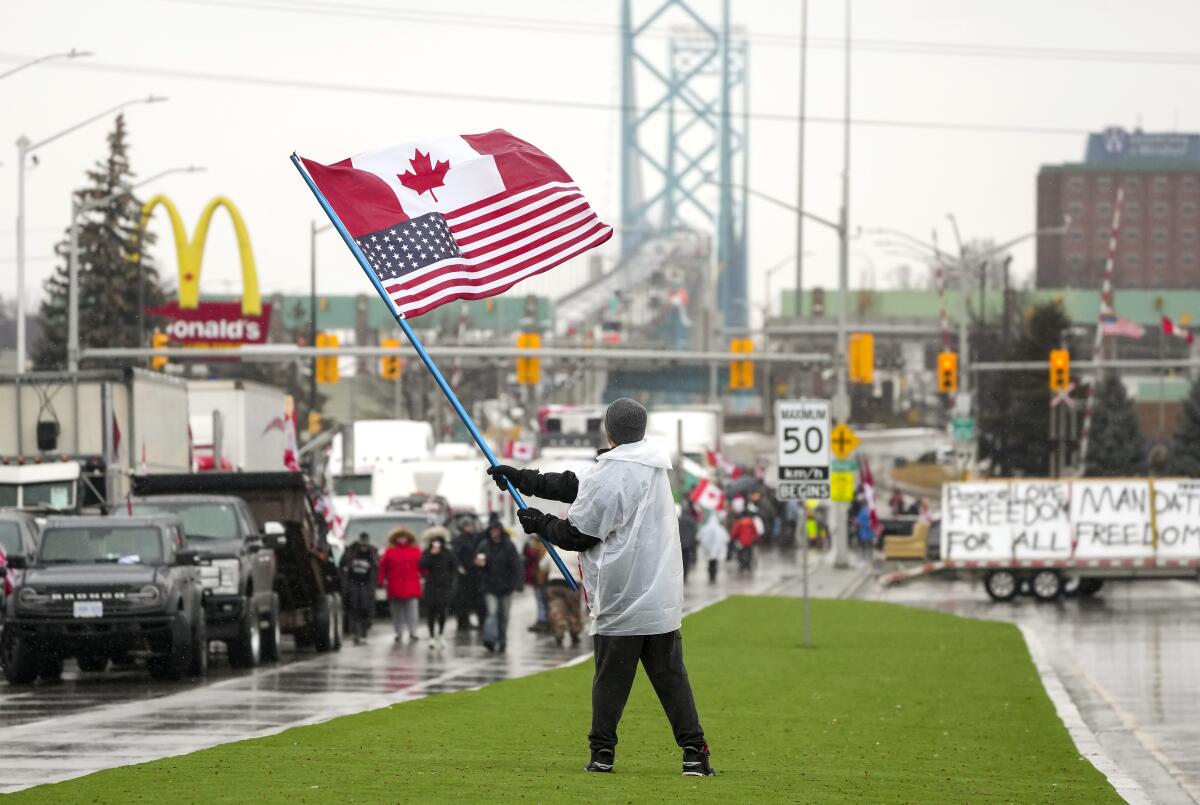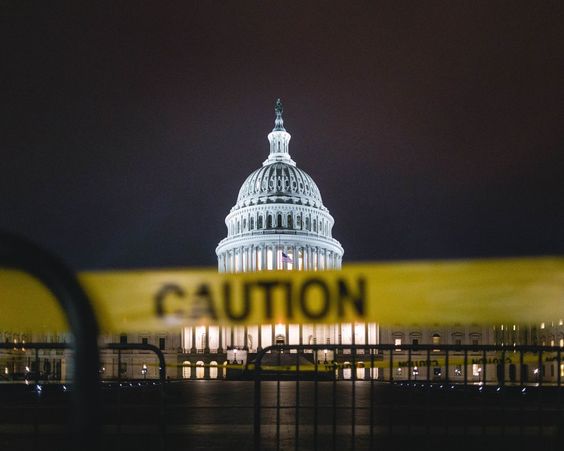What is a Government Shutdown
A government shutdown happens when the legislative branch (Congress) fails to pass the necessary funding bills to finance the government for the next fiscal year. This lack of funding forces a closure of some or all government operations that are deemed nonessential.
Here’s a breakdown of what a government shutdown entails:
- Cause: Disagreement between Congress and the President on spending bills leads to them not being passed before the deadline (typically October 1st).
- Impact: Nonessential government services are suspended. National parks might close, some permit processing could halt, and public tours of government buildings may be cancelled.
- Essential Services: Essential functions like national security, law enforcement, air traffic control, and mail delivery continue. Employees deemed critical for these services might have to work without pay initially, but are usually compensated later. Read about What is Moral Diplomacy
Shutdowns can be disruptive and cause economic uncertainty. They are typically resolved when Congress reaches an agreement and passes the necessary bills.
Causes of a Government Shutdown
Budget Disagreements
The primary cause of a government shutdown is often budget disagreements. The federal budget is a comprehensive financial document that outlines government spending. When Congress and the President cannot agree on this budget, it can lead to a funding gap, causing a shutdown.
Political Standoffs
Political standoffs are another significant factor. These occur when opposing parties or factions within the government cannot come to a consensus on key issues, leading to an impasse. Such standoffs are often fueled by ideological differences and political strategies. Discover about How to Consolidate Democracy

Policy Disputes
Policy disputes also play a crucial role. Specific policies or spending priorities can become contentious issues during budget negotiations. When there is a deadlock over these policies, it can trigger a shutdown.
The Process Leading to a Shutdown
The Federal Budget Process
The federal budget process involves several steps, starting with the President’s budget proposal. This proposal is reviewed and modified by Congress, which then passes budget resolutions and appropriations bills. If these bills are not signed into law by the start of the fiscal year, a shutdown can occur.
Key Players in Budget Approval
Key players in the budget approval process include the President, Congress, and various government agencies. The President proposes the budget, while Congress reviews and amends it. Agencies provide input on their specific needs and priorities.
Breakdown of Negotiations
Negotiations can break down for various reasons, including political disagreements and competing priorities. When these negotiations fail, it can result in a stalemate, leading to a shutdown.
Impact on Government Services
Essential vs. Non-Essential Services
During a shutdown, the government distinguishes between essential and non-essential services. Essential services, such as national security and public safety, continue to operate. Non-essential services, however, are halted, affecting various public functions. Don’t Miss to Check Out Our Website: CANSPECTIVE
Immediate Effects on Government Employees
Government employees are immediately affected by a shutdown. Non-essential employees are furloughed, meaning they are temporarily laid off without pay. Essential employees may work without pay until the shutdown is resolved.
Long-Term Impacts on Public Services
Long-term impacts on public services can be significant. Delays in processing applications, reduced public safety measures, and halted public health initiatives are just a few examples of the extended consequences of a shutdown.
Historical Examples of Government Shutdowns
The 1995-1996 Shutdown
The 1995-1996 shutdown was one of the longest in U.S. history, lasting 21 days. It resulted from a budget conflict between President Bill Clinton and the Republican-led Congress over funding for education, the environment, and public health.
The 2013 Shutdown
The 2013 shutdown lasted 16 days and was primarily due to disagreements over the Affordable Care Act (ACA). This shutdown had significant economic impacts and disrupted numerous government services.
The 2018-2019 Shutdown
The 2018-2019 shutdown holds the record as the longest in U.S. history, lasting 35 days. It was driven by a conflict over funding for a border wall, highlighting the deep political divisions in the country.
Economic Consequences
Short-Term Economic Disruptions
Short-term economic disruptions during a shutdown include delays in government contracts, reduced consumer spending, and halted business activities dependent on government services.
Long-Term Economic Impacts
Long-term economic impacts can be profound. A prolonged shutdown can lead to reduced investor confidence, decreased GDP growth, and long-lasting effects on various industries.
Effects on Financial Markets
Financial markets often react negatively to government shutdowns. Uncertainty and instability can lead to market volatility, affecting investments and retirement accounts.
Social and Political Effects
Public Opinion and Trust in Government
Public opinion tends to sour during a shutdown, leading to decreased trust in government institutions. People may perceive the government as inefficient and unable to fulfill its duties.
Political Ramifications
Political ramifications can be significant. Elected officials may face backlash from their constituents, and the party seen as responsible for the shutdown may suffer in future elections.
Social Services and Public Welfare
Shutdowns disrupt social services and public welfare programs, affecting vulnerable populations the most. Services like food assistance, healthcare, and housing support may be delayed or reduced.
How Government Employees Are Affected
Furloughs and Layoffs
Furloughs and layoffs are common during a shutdown. Non-essential employees are furloughed without pay, while some may face temporary layoffs.
Impact on Salaries and Benefits
Salaries and benefits for government employees are directly impacted. While furloughed employees often receive back pay once the shutdown ends, the uncertainty can cause financial strain.
Mental and Emotional Effects
The mental and emotional effects on government employees can be severe. Uncertainty about job security and financial stability can lead to stress, anxiety, and other mental health issues.
Effects on the Public
Delays in Public Services
Public services are delayed during a shutdown, affecting everything from passport processing to national park maintenance. These delays inconvenience citizens and can disrupt travel plans and other activities.
Impact on Daily Life
Daily life for many Americans is impacted by a shutdown. Public transportation, education programs, and health services may all experience disruptions, affecting millions of people.
Consequences for Businesses and Contractors
Businesses and contractors that rely on government contracts or services can suffer significant losses. Delayed payments and halted projects can lead to financial instability and layoffs in the private sector.
Role of the Media During a Shutdown
Media Coverage and Public Awareness
The media plays a crucial role in covering government shutdowns, informing the public about the reasons behind the shutdown, its impacts, and the progress of negotiations.
Influence on Public Perception
Media coverage influences public perception, shaping opinions about who is to blame and what the consequences are. Balanced reporting is essential for an informed public.
Media as a Watchdog
The media also acts as a watchdog, holding government officials accountable and ensuring transparency during a shutdown. Investigative journalism can uncover the deeper issues at play.
Government Shutdown Myths and Facts
Common Misconceptions
There are many misconceptions about government shutdowns. For example, some people believe all government services cease, which is not true as essential services continue to operate.
Clarifying Facts About Shutdowns
Clarifying facts about shutdowns helps dispel myths. Understanding the actual impacts and processes can lead to more informed discussions and decisions.
Solutions and Prevention
Proposals to Avoid Future Shutdowns
Various proposals aim to prevent future shutdowns, such as automatic continuing resolutions that keep the government funded if a new budget isn’t approved on time.
Legislative and Policy Changes
Legislative and policy changes, including reforming the budget process and improving bipartisan cooperation, are essential to avoiding future shutdowns.
Importance of Bipartisan Cooperation
Bipartisan cooperation is crucial for resolving budget conflicts. Effective communication and compromise between parties can prevent the stalemates that lead to shutdowns.
International Perspective
Comparison with Other Countries
Comparing the U.S. system with other countries highlights unique aspects of the American political landscape. Many countries have mechanisms to avoid government shutdowns.
Unique Aspects of the U.S. System
The U.S. system’s checks and balances can lead to gridlock, making shutdowns more likely. Understanding these unique aspects helps in finding tailored solutions.
Lessons from International Experiences
Learning from international experiences can provide valuable insights into preventing and managing shutdowns. Other countries’ approaches to budget impasses offer useful lessons.
What to Do During a Government Shutdown
Advice for Government Employees
Government employees should prepare for potential shutdowns by saving emergency funds and staying informed about their rights and resources.

Tips for the General Public
The general public can stay informed by following credible news sources, understanding the impacts of a shutdown, and planning for potential disruptions.
How to Stay Informed
Staying informed during a shutdown involves regularly checking reliable news outlets, government announcements, and official social media channels for updates.
Conclusion
Government shutdowns are complex events with far-reaching consequences. They result from budget disagreements, political standoffs, and policy disputes, impacting government services, the economy, and public trust. Understanding the causes, impacts, and potential solutions is essential for mitigating their effects and preventing future occurrences. Through bipartisan cooperation, informed public engagement, and thoughtful policy changes, we can navigate and hopefully avoid the disruptions caused by government shutdowns.
FAQs
What triggers a government shutdown?
A government shutdown is triggered when Congress and the President cannot agree on a federal budget or continuing resolution to fund government operations.
How long can a government shutdown last?
A government shutdown can last until a new budget or funding resolution is passed. Past shutdowns have ranged from a few hours to over a month.
Are all government services affected during a shutdown?
No, essential services such as national security, public safety, and certain healthcare services continue to operate during a shutdown. Non-essential services are suspended.
Do government employees get paid during a shutdown?
During a shutdown, non-essential government employees are furloughed without pay, while essential employees may work without pay until the shutdown ends. Typically, Congress approves back pay after the shutdown is resolved.
Can a government shutdown be prevented?
Yes, a government shutdown can be prevented through timely budget approvals, bipartisan cooperation, and policy reforms such as automatic continuing resolutions to maintain funding in the absence of a new budget.

Welcome to Canspective.ca, where Liam brings a unique perspective to the Canadian experience!
Liam is a talented writer who is dedicated to uncovering the stories that shape our nation and celebrating the diverse voices that make Canada so special. With a passion for exploring the intersections of culture, identity, and society, Liam’s articles offer insightful commentary and thoughtful analysis on the issues that matter most to Canadians.



